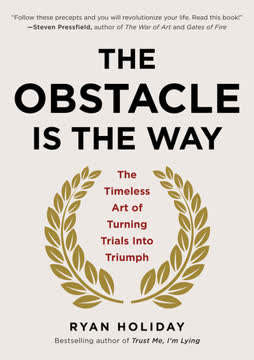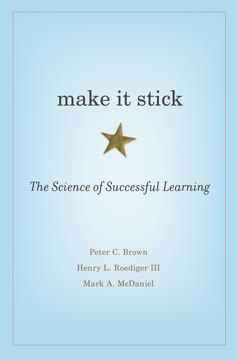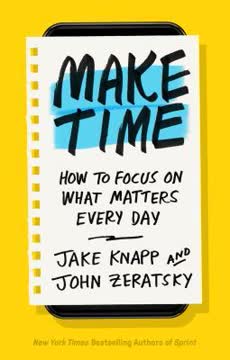Key Takeaways
1. Goal Setting Gives Direction and Empowers You
"Setting goals gives you a direction in life, but vague goals, like making more money or being happy, won't lead to a fulfilling life."
Goals guide your subconscious. When you set clear, specific goals, you give your subconscious mind a target to focus on. This primes your brain to scan your environment for opportunities and information relevant to achieving your goals.
Empowerment through choice. By setting your own goals in all major areas of life (finances, relationships, career, personal growth, health), you take control of your destiny. You become the creator of your life rather than letting circumstances or others dictate your path.
- Areas to set goals:
- Career
- Finances
- Relationships
- Personal growth
- Health
2. Choose Goals That Reflect Your Core Values and Excite You
"Worthy goals have the following features: 1. They reflect your core values and are what you want, not what friends, family, or society wants from you. 2. They truly excite and energize you. 3. You enjoy the process that leads to them and not just the final outcome."
Align with your values. Ensure your goals reflect what truly matters to you, not what others expect. This alignment creates intrinsic motivation and makes the journey more fulfilling.
Excitement is key. Choose goals that genuinely excite and energize you. This enthusiasm will fuel your persistence when faced with challenges. If a goal doesn't stir your soul, it may not be worth pursuing.
- Questions to ask yourself:
- Does this goal reflect my core values?
- Am I excited about the process, not just the outcome?
- Is this what I truly want, or what others expect of me?
3. Set SMARTEST Goals for Maximum Effectiveness
"SMARTEST stands for: Specific, Measurable, Achievable, Relevant, Time-bound, Emotionally Sustainable, Strategized, Transfer goals to the Subconscious."
Beyond SMART goals. The SMARTEST framework builds on the well-known SMART criteria (Specific, Measurable, Achievable, Relevant, Time-bound) by adding crucial elements for success.
Additional key factors:
- Emotionally Sustainable: Prepare mentally for obstacles
- Strategized: Develop a clear plan of action
- Transfer to Subconscious: Overcome limiting beliefs
By incorporating these additional elements, you create a more comprehensive approach to goal setting that addresses both practical and psychological aspects of achievement.
4. Break Down Big Goals into Manageable Steps
"Every goal, regardless of its size, can be achieved through a succession of tiny steps taken every day."
Chunk it down. Large goals can be overwhelming. Break them into smaller, manageable tasks to make progress more tangible and less daunting.
Daily action builds momentum. Consistently taking small steps creates momentum and reinforces your belief in your ability to achieve the goal. This positive reinforcement loop increases motivation and likelihood of success.
- Benefits of breaking down goals:
- Reduces overwhelm
- Makes progress measurable
- Builds confidence through small wins
- Creates momentum
5. Identify and Overcome Limiting Beliefs
"Limiting beliefs are the assumptions upon which we base our lives, which is why it's so important to know which ones are holding us back."
Recognize self-imposed limitations. Our beliefs shape our reality. Identify thoughts that limit your potential, such as "I'm not good enough" or "I'm too old to start this."
Challenge and replace limiting beliefs. Use a four-step process to overcome these mental barriers:
- Identify the limiting belief
- Understand the positive intention behind it
- Challenge its validity with evidence
- Replace it with an empowering belief
Remember, you are not your thoughts. You have the power to choose which beliefs to entertain and which to discard.
6. Visualize Success and Create a Positive Mindset
"Your nervous system cannot tell the difference between an imagined experience and a 'real' experience."
Harness the power of imagination. Visualization is a powerful tool used by athletes, entrepreneurs, and high achievers. By vividly imagining yourself achieving your goals, you prime your brain for success.
Cultivate optimism. Choose to focus on positive aspects of situations. This doesn't mean ignoring reality, but rather consciously directing your attention to opportunities and solutions rather than problems.
- Visualization techniques:
- Create a detailed mental movie of achieving your goal
- Engage all senses in your visualization
- Practice daily for 5-10 minutes
- Use a vision board to reinforce your goals visually
7. Develop Consistent Habits and Take Daily Action
"We are what we repeatedly do. Excellence, then, is not an act, but a habit."
Habits drive long-term success. Your daily actions ultimately determine whether you achieve your goals. Develop habits that align with your objectives and make progress automatic.
Start small and build momentum. Begin with tiny, manageable habits that you can consistently maintain. As these become automatic, gradually increase their scope or difficulty.
- Tips for building habits:
- Set "if...then" triggers to link new habits to existing routines
- Focus on consistency rather than perfection
- Track your progress to reinforce the habit
- Celebrate small wins to boost motivation
8. Stay Flexible and Adjust Goals as Needed
"If it doesn't improve your present reality, then the goal is pointless, and you may as well dump it."
Reassess regularly. As you grow and change, your goals may need to evolve. Periodically review your objectives to ensure they still align with your values and aspirations.
Be willing to let go. If a goal no longer serves you or brings fulfillment, it's okay to abandon or modify it. Flexibility allows you to adapt to new opportunities and insights.
- Questions for goal reassessment:
- Does this goal still excite me?
- Is it aligned with my current values and life purpose?
- Am I pursuing this for myself or to meet others' expectations?
9. Strategize and Prioritize Your Efforts
"When it comes to the work involved in reaching your goals, some things will have more impact than others. The 80/20 rule states that 20% of your efforts will account for 80% of your results."
Focus on high-impact activities. Identify the key tasks that will have the most significant effect on achieving your goal. Prioritize these activities and allocate most of your time and energy to them.
Eliminate distractions. Create a "not-to-do" list of activities that consume time without contributing meaningfully to your goals. Minimize or eliminate these tasks to free up resources for more impactful work.
- Steps to apply the 80/20 rule:
- List all potential tasks related to your goal
- Identify the top 20% that will have the most impact
- Focus the majority of your efforts on these high-value tasks
- Delegate, automate, or eliminate lower-value activities
10. Persevere Through Obstacles and Learn from Failure
"As long as you learn something from setbacks, you can never truly fail."
Expect and embrace challenges. Obstacles are an inevitable part of any worthwhile pursuit. Mentally prepare for setbacks and view them as opportunities for growth and learning.
Reframe failure as feedback. Instead of seeing failures as permanent setbacks, treat them as valuable information that can guide your future efforts. Ask yourself what you can learn from each experience to improve your approach.
- Questions to ask after a setback:
- What can I learn from this experience?
- How can I adjust my approach based on this feedback?
- What strengths did I demonstrate in facing this challenge?
- How has this setback made me more resilient or knowledgeable?
Last updated:
FAQ
What's "Goal Setting: The Ultimate Guide To Achieving Goals That Truly Excite You" about?
- Comprehensive Goal Setting: The book introduces the SMARTEST Goal Method, a comprehensive approach to setting and achieving goals that genuinely excite you.
- Overcoming Limitations: It focuses on overcoming personal limitations and leveraging the subconscious mind to achieve more than you thought possible.
- Avoiding Mistakes: The book highlights common mistakes in goal setting and provides strategies to avoid them.
- Actionable Steps: It includes a step-by-step workbook to guide readers through the goal-setting process, ensuring they take concrete actions toward their ambitions.
Why should I read "Goal Setting: The Ultimate Guide To Achieving Goals That Truly Excite You"?
- Holistic Approach: Unlike many other goal-setting books, this one covers all aspects necessary for effective goal setting.
- Personal Fulfillment: It helps you set goals that reflect your true values and purpose, leading to a more fulfilling life.
- Practical Tools: The book provides practical tools and exercises to help you craft a clear plan of action.
- Empowerment: It empowers you to take control of your life and stop being influenced by external circumstances.
What are the key takeaways of "Goal Setting: The Ultimate Guide To Achieving Goals That Truly Excite You"?
- SMARTEST Goals Method: This method includes setting Specific, Measurable, Achievable, Relevant, Time-bound, Emotionally Sustainable, Strategized, and Transferred goals.
- Intrinsic Motivation: The book emphasizes the importance of internal motivators like autonomy, mastery, and purpose over external ones.
- Overcoming Fear and Failure: It teaches how to reframe failure and overcome self-criticism to persist in achieving your goals.
- Daily Habits and Mindset: Establishing daily habits and a positive mindset are crucial for long-term success.
What is the SMARTEST Goal Method?
- Specific Goals: Clearly define what you want to achieve to tap into the focusing power of your mind.
- Measurable Goals: Ensure your goals can be tracked and assessed for progress.
- Achievable Goals: Set realistic goals that challenge you but are within reach.
- Emotionally Sustainable: Prepare mentally for obstacles and develop perseverance to achieve your goals.
How does the book suggest overcoming limiting beliefs?
- Identify Limiting Beliefs: Recognize the beliefs that hold you back and understand they are subjective truths.
- Befriend Your Subconscious: Understand the positive intentions behind your limiting beliefs and work with your subconscious mind.
- Challenge Beliefs: Argue with your subconscious by gathering evidence that disproves your limiting beliefs.
- Replace Beliefs: Create new, empowering beliefs and reinforce them through daily affirmations.
What role does the subconscious mind play in achieving goals according to the book?
- Automatic Guidance System: The subconscious mind operates in terms of goals and end results, guiding you towards them.
- Priming and Focus: Setting clear goals sends a strong signal to your subconscious, allowing it to focus on opportunities to achieve them.
- Overcoming Limiting Beliefs: The book emphasizes the importance of aligning your subconscious with your goals to avoid self-sabotage.
- Daily Conditioning: Regular visualization and affirmations help reprogram the subconscious for success.
What are some common pitfalls in goal setting mentioned in the book?
- Vague Goals: Setting unclear goals leads to vague results and lack of direction.
- Excessive Focus: Over-focusing on a goal can lead to neglecting other important life areas.
- Unrealistic Timeframes: Setting goals with unrealistic deadlines can lead to discouragement and failure.
- Neglecting the Present: Focusing too much on future goals can cause dissatisfaction with the present.
How does the book recommend using daily habits to achieve goals?
- Building Momentum: Daily actions build momentum and make goals part of your reality.
- Automating Success: Turning tasks into daily habits automates the achievement process.
- Starting Small: Begin with manageable tasks to avoid negative feelings and gradually increase commitment.
- Setting Triggers: Use "if...then" triggers to create automatic habits and conserve willpower.
What are the best quotes from "Goal Setting: The Ultimate Guide To Achieving Goals That Truly Excite You" and what do they mean?
- "People without goals are doomed to work forever for people who do have goals." - Brian Tracy: This quote emphasizes the importance of setting personal goals to take control of your life.
- "A goal is a dream with a deadline." - Napoleon Hill: It highlights the necessity of setting deadlines to turn dreams into actionable goals.
- "We are what we repeatedly do. Excellence, then, is not an act, but a habit." - William Durant: This quote underscores the power of daily habits in achieving excellence.
How does the book address the fear of failure?
- Reframing Failure: Failure is seen as a necessary step towards success and a learning opportunity.
- Inoculating Against Failure: Mentally prepare for setbacks by imagining worst-case scenarios and planning responses.
- Learning from Setbacks: Use failures to adjust strategies and realign actions with goals.
- Persistence: Emphasizes the importance of persisting through failures to ultimately achieve success.
What is the role of visualization in achieving goals according to the book?
- Imagination as a Tool: Visualization allows you to create desired experiences in your mind, influencing your subconscious.
- Building Confidence: Regular visualization increases confidence in your ability to achieve goals.
- Emotional State: Visualizing success puts you in a positive emotional state, enhancing creativity and motivation.
- Vision Boards: Creating a vision board helps focus on goals and makes them more concrete in your mind.
How does the book suggest dealing with self-criticism?
- Self-Compassion Over Criticism: Research shows self-compassion is more effective than self-criticism for performance and perseverance.
- Judging Competence Accurately: People with healthy self-esteem judge their competence accurately without harsh self-criticism.
- Building Self-Esteem: Discipline and achieving small goals consistently boost self-esteem.
- Accepting Imperfection: Recognize that everyone is imperfect and practice treating yourself with kindness and understanding.
Review Summary
Readers generally found Goal Setting: The Ultimate Guide to Achieving Goals That Truly Excite You helpful and practical. Many appreciated its concise nature and clear advice on setting SMART goals. The book's emphasis on emotional sustainability and addressing limiting beliefs was praised. Some found the content familiar but well-organized. The included workbook and actionable steps were highlighted as valuable. A few critics noted an overreliance on quotes and a mechanical narration in the audiobook version. Overall, reviewers found the book a useful guide for goal-setting and achievement.
Similar Books










Download PDF
Download EPUB
.epub digital book format is ideal for reading ebooks on phones, tablets, and e-readers.














